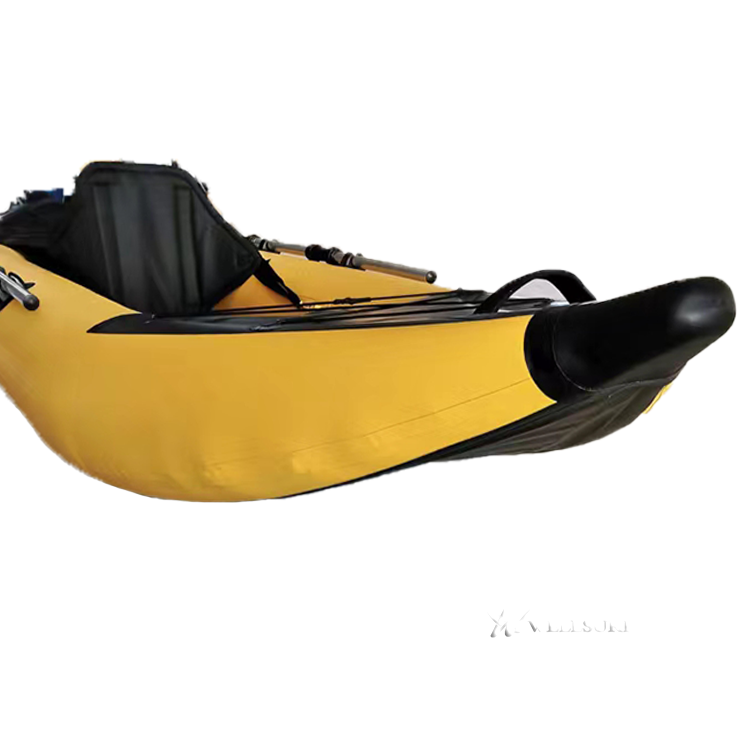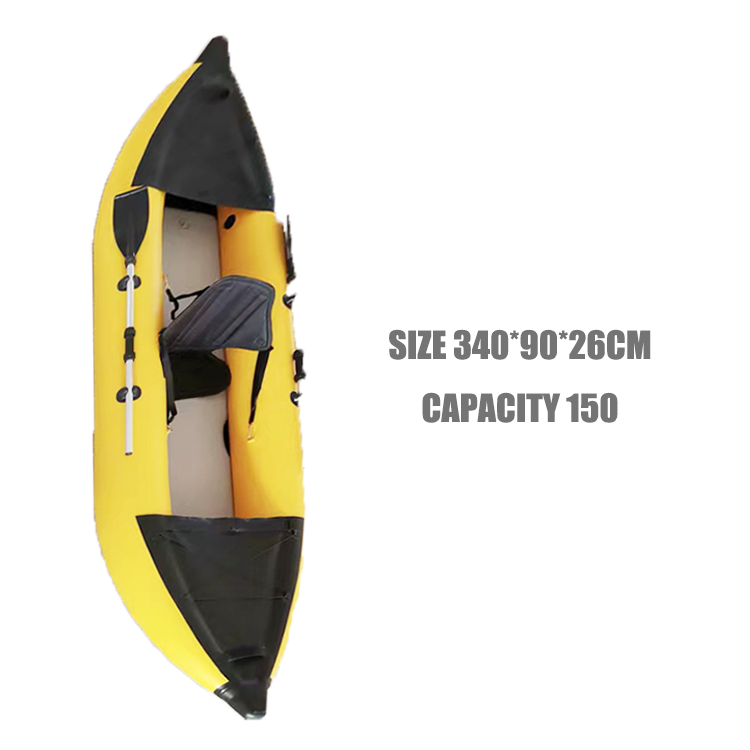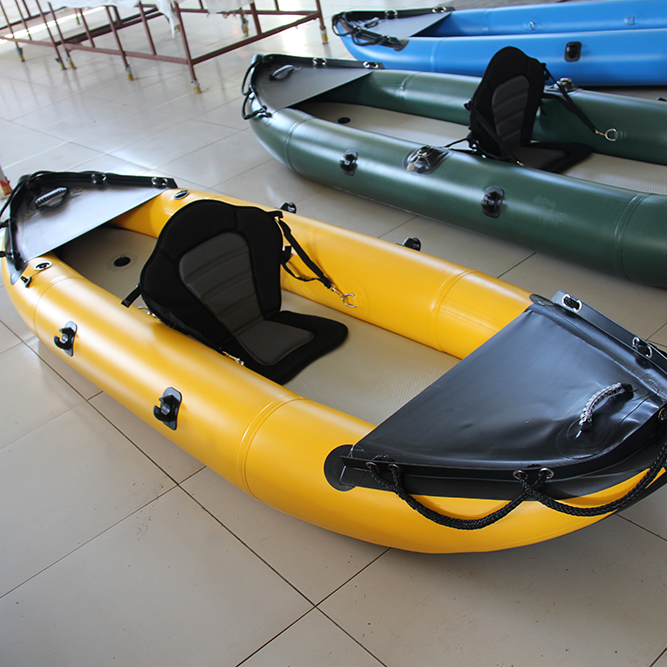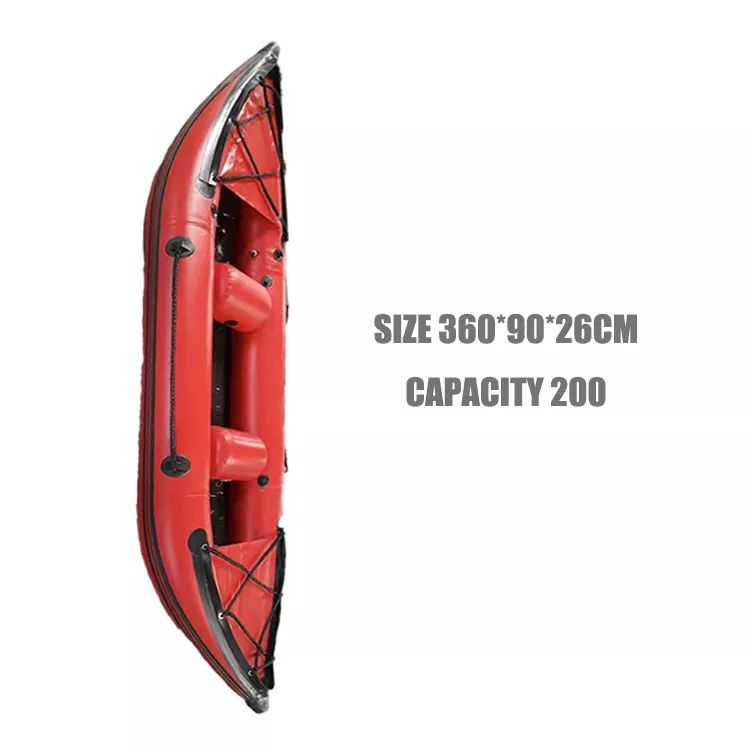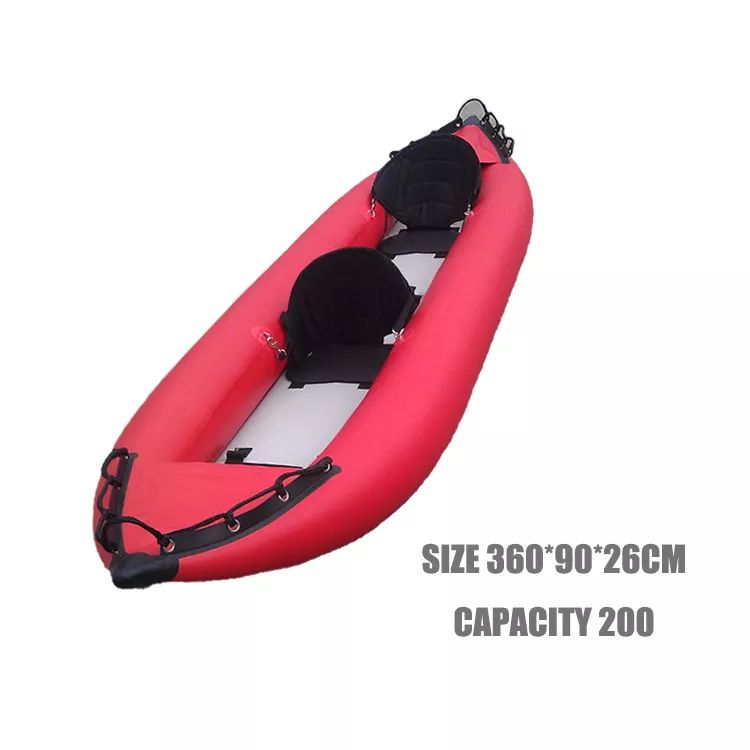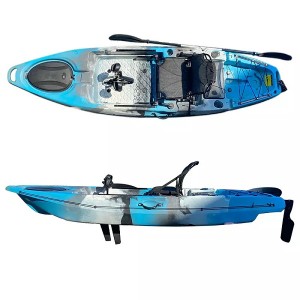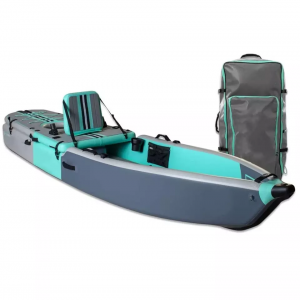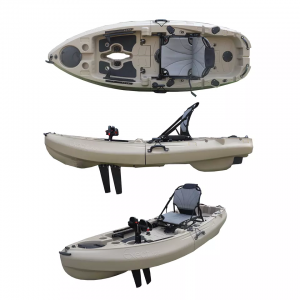| Place of Origin | Shandong, China |
| Brand Name | OEM |
| Model Number | HT-1 |
| Hull Material | PVC, PVC |
| Capacity (Person) | 1 |
| Outdoor Activity | Drifting |
| Occasion | Lakes & Rivers |
| Product name | Inflatable kayak |
| Material | high pressure drop stitch, military grade pvc |
| Length | 3m/4m/customized |
| Width | 90cm/ customized |
| Tube diameter | 26cm |
| Color | Yellow/ customized |
| Floor | Drop Stitch Floor |
| Accessories | Foot pump/Single paddle/bag/ seat/repair kit |
| Warranty | 1 Year |
| Packaging & Delivery | |
| Packaging Details:Outer Packing | 7 layer corrugated box |
| Carton size | 100*70*30cm |
Product Image
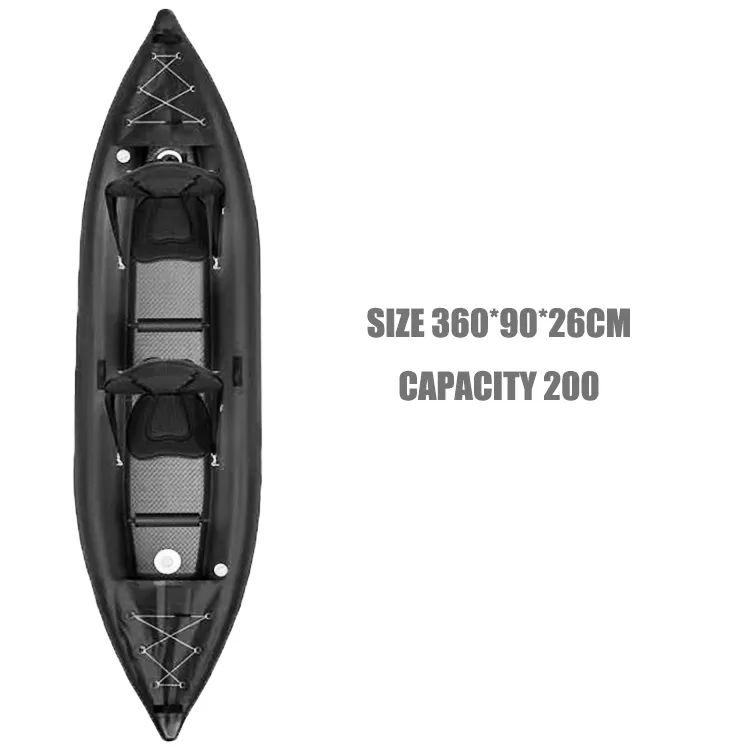
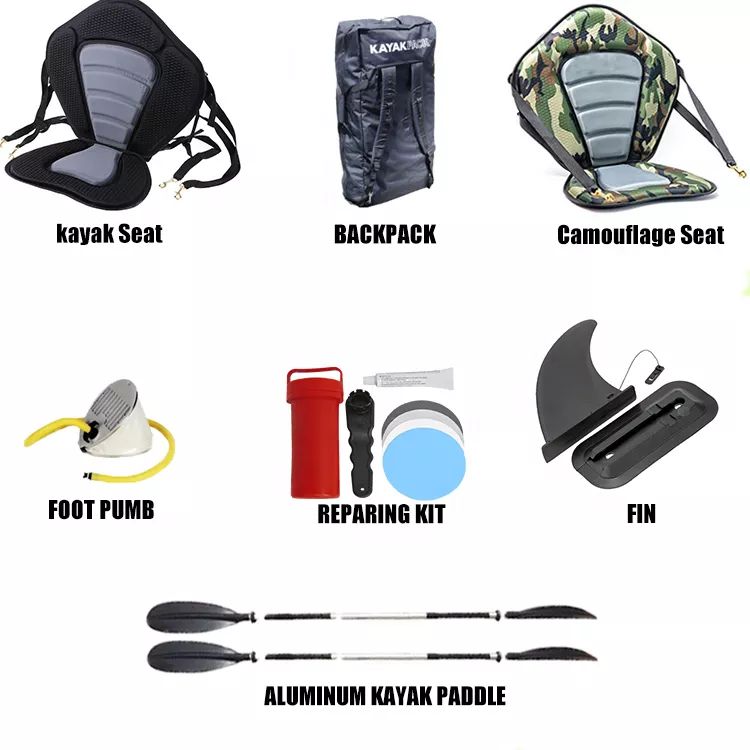
Packaging & Delivery
| Quantity(pieces) | 1 - 5 | >300 |
| Est. Time(days) | 7-14 | To be negotiated |
①Designs and sizes are available ② Materials: standard PVC and drop stitch fabric ③ PVC thickness in custom request,usually PVC thickness:0.7mm—0.9mm ④ Color: Appointed pantone color ⑤ Imprinting: Customer's own designs or logo are welcomed
There is a difference between a mountain bike saddle and a road bike saddle
"Sit on top" kayaks place paddlers in an open, dimpled deck above the water level. This style is typically used for non-whitewater activities, as most people find it difficult to stay inside the kayak, while also preventing the kayak from "rolling", allowing the user to stand upright if they roll over. Sitting on top has some benefits, such as being able to "dry the hatch," a compartment that typically runs the length of the kayak where, in addition to providing more buoyancy, kayakers can store various equipment . "Kayaks" sitting on top often use "through holes", which allow all the water coming in on the boat to drain through the deck and dry out. A "cockpit style" or "spray skirt" creates a watertight seal at the waist. There are a variety of "cockpit" boats that generally allow the user more control over the boat due to their ability to push against the walls to tip over to complete the maneuver. A common variant of "cockpit style" kayaks are "cruise boats", which are usually very short kayaks in which the user can perform tricks and maneuvers: "inflatables" are a hybrid of the first two configurations. These boats have an open deck, but the paddlers sit under the deck. These boats are often more unstable due to their higher position in the water. They are often used in a more commercial setting and are often affectionately referred to as "Duckies." The "tandem" contrasts with the distinctive design of most kayaks, which are configured for multiple paddlers. Tandems can be used by two or even three paddlers.
Kayaking related equipment
There are several types of kayaks used in flat water and whitewater kayaking. Size and shape will vary greatly depending on the type of water being rowed and the willingness of the rower. The second set of essential elements for kayaking is the offset paddle, where the paddle blade is angled to help reduce wind resistance and the other blade is used when in the water. They also vary in length and shape, depending on the intended use, the height of the rower and the preference of the rower. The kayak should be equipped with one or more buoyancy aids (also known as flotation) to create air space to prevent the kayak from sinking when it fills with water. A life jacket (also known as a personal flotation device or PFD) and helmet should be worn at all times. Most kayaks often require waterskiing, as are whitewater kayaks. Various other safety equipment includes: whistle to signal distress; throw rope to help rescue other kayakers; diving knife and suitable water shoes should be used depending on the risk posed by the water and terrain. Appropriate clothing, such as a dry suit, wetsuit, or spray suit, can also help protect kayakers from cold or air temperatures.
-
Dinghy, fishing, canoe, kayaking
-
Pedal boat fishing kayak with rudder system 10 ...
-
2022 professional single seat angler sea fishin...
-
Inflatable kayaks and stand-up paddleboard kayaks
-
Book seat, kayak, canoe fishing, OEM/ODM from T...
-
Pedal kayaks, fishing kayaks
